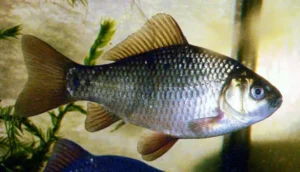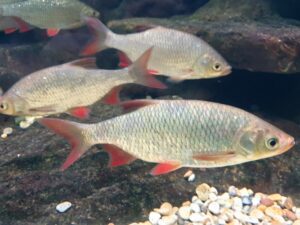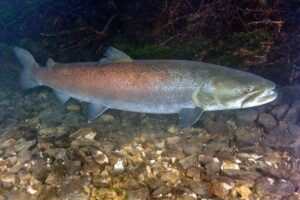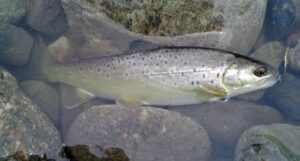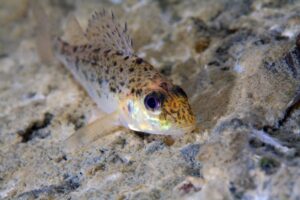Freshwater fish: Game fish
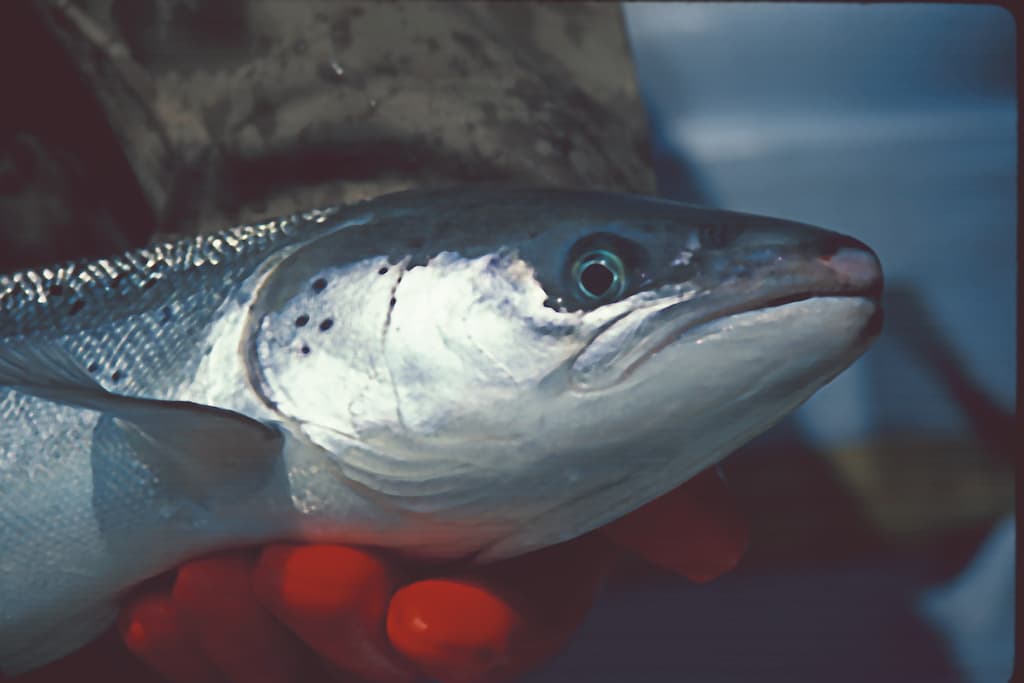
Freshwater Game fish encompasses a rich and diverse array of species that attract anglers from around the world.
These waters are home to sought-after species like the wily Brown Trout, the mighty Pike, and the elusive European Perch, each offering a unique challenge to freshwater anglers. Found across various European water bodies, from the serene streams of the Scottish Highlands to the vast network of rivers and lakes across the continent, these Game fish are integral to recreational fishing and play a crucial role in local ecosystems and cultural traditions. Their popularity has spurred a range of conservation efforts to ensure sustainable fishing practices and the preservation of these aquatic treasures.

What is Game fish?
Game fish are a category of freshwater fish highly prized in sport fishing and cuisine. These fish are known for their fighting abilities when hooked, making them a popular target for anglers seeking a challenge. In addition to their sporting appeal, Game fish are also valued for their culinary qualities, with many species being sought after for their delicious taste and texture.
Definition of Game fish
“Game fish” refers to a group of fish pursued for sport rather than commercial purposes. These fish are typically found in freshwater bodies such as rivers, lakes, and streams and are known for their spirited resistance when caught on a hook and line.
Characteristics of Game fish
Game fish are characterised by their agility, strength, and speed, which make them formidable opponents for anglers. These fish are often prized for their size, with many species growing to impressive lengths and weights. Specimens of Game fish whose measurements (body length and weight) significantly exceed the species’ average are sometimes known as trophy fish, as such captures are often presented as bragging rights among fishers.
Widespread Game fish Species in Europe
In Europe, a wide variety of fish species are considered Game fish. Large cyprinids such as Carps, Barbels, Breams, Cchubs, Daces, and Tench are popular targets for anglers. Additionally, Perches, freshwater Salmonids, including Trout, Graylings, Whitefish, Taimen, Drum, Pikes, Catfish, Eels, and Snakeheads are also highly sought after by fishing enthusiasts. In the United Kingdom, “Game fish” refers to salmonids other than graylings – salmon, trout, and char.
Some famous Game fish have been introduced and stocked worldwide. For example, Rainbow Trout can be found in various locations where the climate is suitable, and it is now listed as one of the worst invasive species due to its widespread distribution.
Habitat and Behavior of Game fish
Typical habitats of Game fish in Europe
Game fish in Europe can be found in many freshwater habitats, including rivers, lakes, ponds, and reservoirs. Each species has specific habitat preferences, with some thriving in fast-flowing rivers while others prefer the calm waters of lakes and ponds.
Feeding habits and behaviour of Game fish
Game fish exhibit a diverse range of feeding habits and behaviours. Some species are predatory, preying on smaller fish and aquatic organisms, while others are bottom feeders, foraging for food on the lake or riverbed. Understanding Game fish’s feeding habits and behaviour is essential for successful angling.
Factors influencing the distribution of Game fish in freshwater bodies
Various factors, including water temperature, oxygen levels, food availability, and habitat structure, influence Game fish’s distribution in freshwater bodies. Anglers must consider these factors when targeting specific Game fish species to increase their chances of a successful catch.
Fishing Techniques and Gear for Game fish
Standard Fishing Techniques for Game fish
Anglers employ various fishing techniques to target Game fish, including baiting, lures, flies, and trolling. Each method requires specific skills and knowledge of the target species’ behaviour and habitat. In addition to the fishing techniques,
Essential gear for Game fish angling
The choice of fishing gear also plays a crucial role in catching Game fish. The load varies depending on the fishing technique and the targeted species. Standard equipment includes fishing rods, reels, lines, hooks, baits, lures, and other accessories tailored to the specific needs of Game fishing angling.
Tips for successful Game fish angling
Successful Game fish angling requires patience, observation, and understanding of the target species. Anglers should research the behaviour and habitat of the Game fish they intend to catch and adapt their techniques and gear accordingly.
Example of a Game fish: the Brown Trout (Salmo trutta fario)
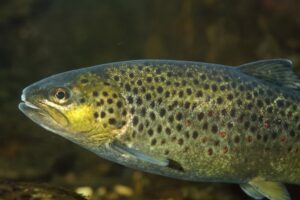
The Brown Trout is a highly prized Game fish species in European rivers and lakes. Known for its elusive nature and impressive fighting abilities, the Brown Trout is a favourite among anglers seeking a challenging catch. This species is often targeted using fly fishing techniques in clear, flowing waters, making for an exhilarating angling experience.
The borderline between Game fish and another fish type
The Wels Catfish: Game fish or Predatory Fish?
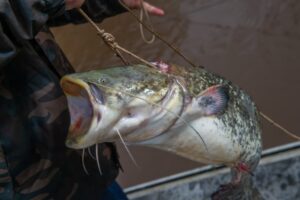
The Wels catfish, a large freshwater fish found in European rivers, is a subject of debate when categorising it as a Game fish or a predatory fish. While it is sought after by anglers for its size and strength, the Wels catfish is also a formidable predator, feeding on various aquatic organisms. This dual nature blurs the line between Game fish and predatory fish, sparking discussions among fishing enthusiasts.
The Common Carp: Game fish or Bottom Feeders?
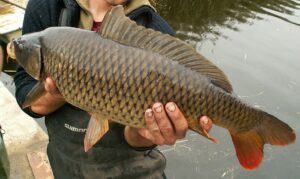
The Common Carp is another species that raises questions about its classification as a Game fish. While anglers prize carp for their size and fighting abilities, they are also known as bottom feeders, foraging for food on the river or lakebed. This unique combination of characteristics challenges traditional definitions of Game fish, prompting further exploration of the borderline between Game fish and other fish types.
Records
The International Game fish Association (IGFA) publishes the authoritative World Record Game fishes, an annual guide documenting nearly 400 salt- and freshwater fish species worldwide. This comprehensive resource categorises records for juniors, tackle and line types, fly fishing, and locality, ensuring a thorough and organised compilation of fishing achievements.
Culinary Aspects of Game fish
Popular Game fish for culinary purposes
Many Game fish species are highly regarded for their culinary qualities, with their firm, flavorful flesh making them a sought-after ingredient in various cuisines. Species such as Trout, Salmon, Pike, and Perch are popular choices for culinary purposes.
Taste and texture of Game fish
Game fish are known for their delicate flavour and firm texture, making them versatile ingredients for various dishes. The taste of Game fish can vary depending on the species and its habitat, with some fish having a mild, sweet flavour while others have a richer, more pronounced taste.
Preparation and cooking methods for Game fish
Game fish can be prepared using various cooking methods, including grilling, baking, frying, and smoking. Their firm flesh holds up well to different cooking techniques, allowing for the creation of diverse and delicious dishes that showcase the fish’s natural flavours.
Importance of conservation for Game fish populations
Conservation efforts are crucial for maintaining healthy Game fish populations in freshwater bodies. Sustainable fishing practices, habitat preservation, and responsible angling are essential for ensuring the continued abundance of Game fish species. By promoting conservation and environmental stewardship, anglers can contribute to preserving Game fish populations for future generations.

